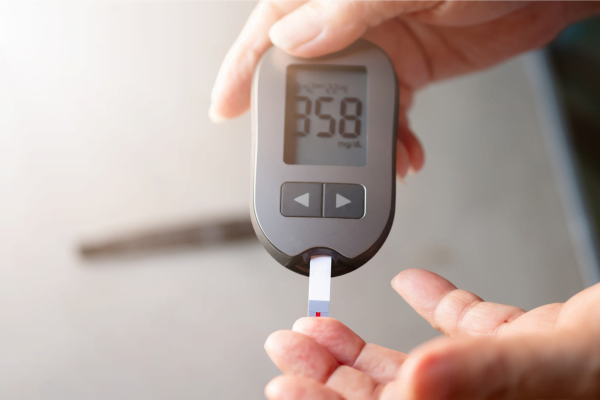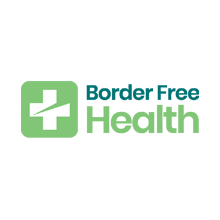Hyperglycemia, a condition characterized by high blood sugar levels, can be a concerning health issue if left unmanaged. Recognizing its signs and symptoms is crucial for early intervention and proper management. In this comprehensive guide, we delve into the various indicators of hyperglycemia, shedding light on what to look out for and why prompt action is essential.
Understanding Hyperglycemia
Hyperglycemia occurs when the body fails to regulate blood sugar levels effectively. It is most commonly associated with diabetes mellitus, both type 1 and type 2, although it can also arise due to other factors such as stress, illness, or certain medications. When blood sugar levels remain consistently high, it can lead to a range of complications affecting various organs and systems in the body.
Signs and Symptoms of Hyperglycemia
- Increased Thirst and Frequent Urination: Early signs of hyperglycemia include excessive thirst (polydipsia) due to the body’s attempt to flush out excess sugar, leading to dehydration, and frequent urination (polyuria) as the kidneys work overtime to filter and excrete glucose, often disrupting sleep patterns..
- Fatigue and Weakness: When cells are unable to effectively utilize glucose for energy due to insulin resistance or deficiency, fatigue and weakness can set in. This persistent lack of energy can impact daily activities and productivity.
- Increased Hunger (Polyphagia): Despite elevated blood sugar levels, cells may be deprived of adequate energy, triggering hunger signals. This can lead to increased food intake and weight gain if not properly managed.
- Blurred Vision: High blood sugar levels can cause fluid to be pulled from the lenses of the eyes, affecting their ability to focus properly. Blurred vision or difficulty in focusing is a common symptom of hyperglycemia.
- Slow Healing of Wounds: Hyperglycemia can impair the body’s ability to heal wounds and injuries due to poor circulation and compromised immune function. Even minor cuts and bruises may take longer to heal.
- Dry Mouth and Skin: Dehydration resulting from excessive urination can lead to dry mouth and skin. Skin may become dry, itchy, and prone to infections, particularly in areas prone to friction or moisture.
- Diabetic Headache and Irritability: Fluctuations in blood sugar levels can trigger headaches and irritability. These symptoms may vary in intensity depending on the degree of hyperglycemia and individual tolerance levels.
Glucose Management Indicator
Effective glucose management is vital for maintaining overall health and preventing complications associated with hyperglycemia (high blood sugar) or hypoglycemia (low blood sugar). Uncontrolled blood glucose levels can lead to a myriad of health issues, including cardiovascular disease, neuropathy, retinopathy, kidney disease, and impaired wound healing.
By diligently monitoring glucose management indicators and taking proactive steps to optimize blood sugar levels, individuals can reduce the risk of diabetes-related complications and improve their quality of life. This includes adopting a balanced diet, engaging in regular physical activity, managing stress levels, adhering to prescribed medications, and maintaining regular follow-ups with healthcare providers.
Blood Sugar Levels Chart by Age
While blood sugar levels can vary among individuals, there are general guidelines for healthy blood sugar levels based on age. It’s important to note that these ranges may differ slightly depending on various factors such as individual health conditions and whether the measurements are taken before or after meals.
Below is a general blood sugar levels chart by age:
- Children and Adolescents (ages 0-18)
- Fasting Blood Sugar (FBG): 70-100 mg/dL (3.9-5.6 mmol/L)
- Postprandial Blood Sugar (PPBG) after meals: Less than 140 mg/dL (7.8 mmol/L)
- Adults (ages 18-60)
- Fasting Blood Sugar (FBG): 70-100 mg/dL (3.9-5.6 mmol/L)
- Postprandial Blood Sugar (PPBG) after meals: Less than 140 mg/dL (7.8 mmol/L)
- Older Adults (ages 60 and above)
- Fasting Blood Sugar (FBG): 70-100 mg/dL (3.9-5.6 mmol/L)
- Postprandial Blood Sugar (PPBG) after meals: Less than 140 mg/dL (7.8 mmol/L)
It’s important to note that these are general guidelines, and individual variations may occur. Additionally, people with diabetes or other health conditions may have different target ranges prescribed by their healthcare provider.
Herbs That Lower Blood Sugar Fast
Several herbs have traditionally been used to help lower blood sugar levels, potentially benefiting individuals with diabetes or those at risk of developing it. Herbs like cinnamon, fenugreek, ginseng, gymnema sylvestre, bitter melon, berberine, aloe vera, and turmeric contain compounds that can mimic insulin’s effects, improve glucose uptake, and reduce glucose production in the liver.
While adding these herbs to your diet or taking them as supplements may provide extra support for managing blood sugar, it’s important to talk to a healthcare professional first, especially if you have diabetes or take medications. Regularly monitoring blood sugar levels and following your healthcare provider’s advice remain crucial for effectively managing diabetes.
Takeaways
Recognizing the signs and symptoms of hyperglycemia is crucial for timely intervention and management. If you or someone you know experiences any of these symptoms, especially in the context of known risk factors such as diabetes or medication use, it is important to seek medical advice promptly. Early detection and proper management can help prevent complications associated with prolonged hyperglycemia, improving overall health and well-being.
Frequently Asked Questions (FAQs)
Why is my blood sugar high when I have not eaten anything?
Blood sugar levels can rise even without food intake due to various factors such as stress, illness, certain medications, or the dawn phenomenon, where the body releases hormones that raise blood sugar levels in the early morning hours.
Does sugar raise blood pressure?
While sugar itself may not directly raise blood pressure, consuming sugary foods and drinks in excess can contribute to weight gain and obesity, which are risk factors for hypertension (high blood pressure).
How long does blood sugar stay elevated after eating?
Blood sugar levels typically peak within 1 to 2 hours after eating a meal and then gradually return to baseline levels within 3 to 4 hours. However, this can vary depending on the composition of the meal, individual metabolism, and other factors.
What blood sugar level requires insulin?
The need for insulin depends on individual factors, including the type and severity of diabetes, overall health, and treatment plan. Generally, insulin is required when blood sugar levels consistently remain elevated above target ranges despite lifestyle modifications and oral medications.
Is feeling sick after eating sugar a sign of diabetes?
Feeling sick after consuming sugar can be a symptom of various conditions, including diabetes, but it is not definitive. Other symptoms such as increased thirst, frequent urination, fatigue, and unexplained weight loss are more indicative of diabetes.
Can high blood sugar cause headaches?
Yes, high blood sugar levels can lead to headaches in some individuals. Fluctuations in blood sugar levels can affect blood vessels and neurotransmitters in the brain, triggering headaches or migraines.
Is a blood sugar level of 170 dangerous?
A blood sugar level of 170 mg/dL may indicate hyperglycemia (high blood sugar), especially if it is consistently above target ranges. While not immediately dangerous, prolonged elevation in blood sugar levels can lead to complications over time. It’s essential to monitor blood sugar levels regularly and consult with a healthcare professional to determine appropriate management strategies.

